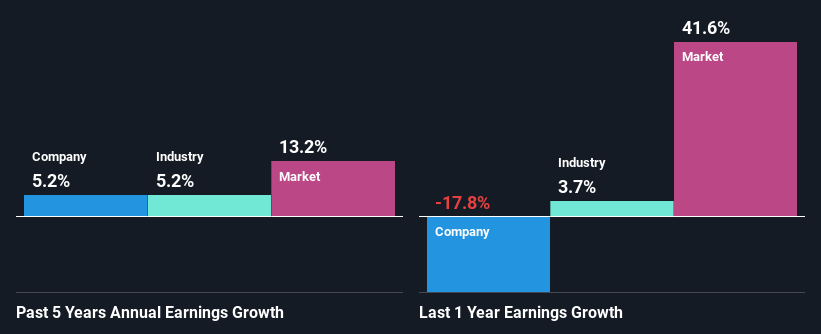Via Renewables, Inc. (NASDAQ:VIA) Stock Has Shown Weakness Lately But Financials Look Strong: Should Prospective Shareholders Make The Leap?
Via Renewables (NASDAQ:VIA) has had a rough month with its share price down 8.2%. But if you pay close attention, you might gather that its strong financials could mean that the stock could potentially see an increase in value in the long-term, given how markets usually reward companies with good financial health. Particularly, we will be paying attention to Via Renewables' ROE today.
Return on equity or ROE is an important factor to be considered by a shareholder because it tells them how effectively their capital is being reinvested. Put another way, it reveals the company's success at turning shareholder investments into profits.
See our latest analysis for Via Renewables
How Is ROE Calculated?
The formula for ROE is:
Return on Equity = Net Profit (from continuing operations) ÷ Shareholders' Equity
So, based on the above formula, the ROE for Via Renewables is:
22% = US$41m ÷ US$181m (Based on the trailing twelve months to September 2021).
The 'return' refers to a company's earnings over the last year. Another way to think of that is that for every $1 worth of equity, the company was able to earn $0.22 in profit.
What Has ROE Got To Do With Earnings Growth?
So far, we've learned that ROE is a measure of a company's profitability. Depending on how much of these profits the company reinvests or "retains", and how effectively it does so, we are then able to assess a company’s earnings growth potential. Generally speaking, other things being equal, firms with a high return on equity and profit retention, have a higher growth rate than firms that don’t share these attributes.
Via Renewables' Earnings Growth And 22% ROE
Firstly, we acknowledge that Via Renewables has a significantly high ROE. Secondly, even when compared to the industry average of 9.5% the company's ROE is quite impressive. This likely paved the way for the modest 5.2% net income growth seen by Via Renewables over the past five years. growth
As a next step, we compared Via Renewables' net income growth with the industry and found that the company has a similar growth figure when compared with the industry average growth rate of 5.2% in the same period.
Earnings growth is an important metric to consider when valuing a stock. What investors need to determine next is if the expected earnings growth, or the lack of it, is already built into the share price. This then helps them determine if the stock is placed for a bright or bleak future. If you're wondering about Via Renewables''s valuation, check out this gauge of its price-to-earnings ratio, as compared to its industry.
Is Via Renewables Making Efficient Use Of Its Profits?
While Via Renewables has a three-year median payout ratio of 77% (which means it retains 23% of profits), the company has still seen a fair bit of earnings growth in the past, meaning that its high payout ratio hasn't hampered its ability to grow.
Moreover, Via Renewables is determined to keep sharing its profits with shareholders which we infer from its long history of seven years of paying a dividend.
Summary
Overall, we are quite pleased with Via Renewables' performance. Especially the high ROE, Which has contributed to the impressive growth seen in earnings. Despite the company reinvesting only a small portion of its profits, it still has managed to grow its earnings so that is appreciable. Until now, we have only just grazed the surface of the company's past performance by looking at the company's fundamentals. You can do your own research on Via Renewables and see how it has performed in the past by looking at this FREE detailed graph of past earnings, revenue and cash flows.
Have feedback on this article? Concerned about the content? Get in touch with us directly. Alternatively, email editorial-team (at) simplywallst.com.
This article by Simply Wall St is general in nature. We provide commentary based on historical data and analyst forecasts only using an unbiased methodology and our articles are not intended to be financial advice. It does not constitute a recommendation to buy or sell any stock, and does not take account of your objectives, or your financial situation. We aim to bring you long-term focused analysis driven by fundamental data. Note that our analysis may not factor in the latest price-sensitive company announcements or qualitative material. Simply Wall St has no position in any stocks mentioned.

 Yahoo Finance
Yahoo Finance 
